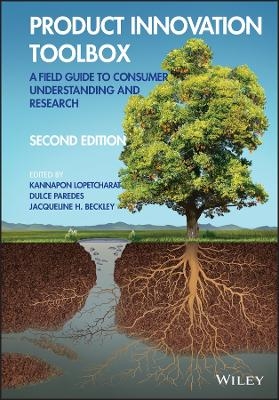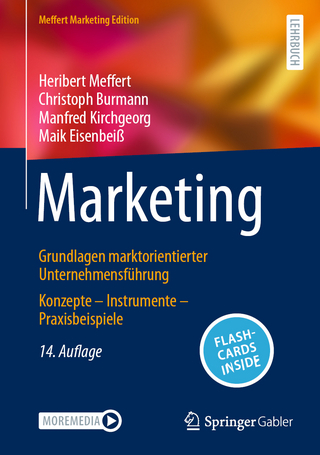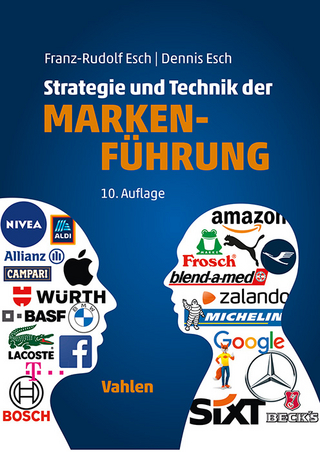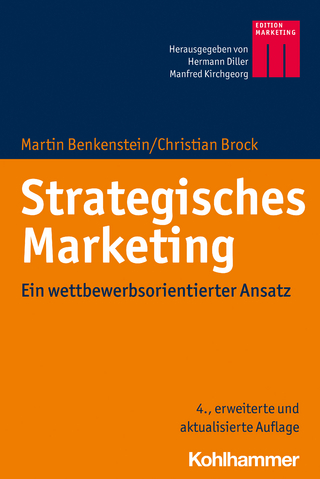
Product Innovation Toolbox
John Wiley & Sons Inc (Verlag)
978-1-119-71284-8 (ISBN)
In recent years, behavioral approaches, social media listening, and other new techniques and technologies—digital techniques, augmented intelligence, machine learning, and advanced biometrics, among others—have been foregrounded in innovation research. A focus on the evolving fields of data science and neuroscience is a driving force for both researchers and the people they study. These digital and mobile technologies have enabled researchers to augment listening, observing and categorizing methods, and to adapt new techniques in attempting to better understand consumers. On the other hand, digitized mobile societies, spurred by faster and cheaper internet access, emphasize an interconnectedness that drastically alters human behaviors and creates borderless influences. Even so, the tenets and approaches to insightful deep learning for consumers and other actors, from discovery through to the launch of successful products, remains an intrinsic part of assessing the market.
Product Innovation Toolbox brings together key thought leaders and seasoned consumer researchers from corporate R&D, academia, and marketing research companies to share their experiences, advanced consumer research tools and practical tips for successful and sustainable product innovation. By offering these leading-edge tools and insights, the book ensures consumer-centric innovation by linking strategy and a designed approach.
The new edition focuses on the integration and connection of all data—both structured and unstructured???for deep learning and activation, rather than a differentiated qualitative—quantitative approach, reflecting the shifting relationships involved in the latest developments in the field.
The second edition of Product Innovation Toolbox also includes:
Revised material for more than 70% of the manual, with 11 new and extensively updated chapters
New tools sections on digital technologies to create novel ways to stimulate and elicit insights from participants, such as Virtual Reality (VR) and Digital Augmentation
Upgraded versions of tools in each updated section, with fresh examples
New case studies created using the tools from the previous edition, including cases regarding cross-continental marketplaces and cross-cultural societies
An emphasis on tools with global applications
Product Innovation Toolbox is an essential resource for product developers, marketers, and technologists.
Kannapon Lopetcharat is the Executive Director at Nouveau Centric Co. Ltd. in Bangkok, Thailand. He holds a PhD in sensory science and psychophysics, with a minor in statistics from Oregon State University. He has worked for Unilever and Avon as a consumer science manager, and has extensive experience in applying consumer product and sensory research in product development and innovation. Dulce Paredes is an experienced ‘consumer navigator’ who works with organizations using consumer insights to develop products and innovation programs. She is the global leader of consumer insights and market research flavor division for Takasago International Corporation (USA). She previously led R&D consumer sciences groups at Avon Products and Kraft Foods. She was a product developer for PepsiCo Inc. after completing her PhD in food science from Cornell University. Jacqueline H. Beckley is the founder of The Understanding & Insight Group, LLC, in Denville, New Jersey, USA. She is considered one of the early adaptors of face-to-face qualitative understanding. Prior to this, Beckley held positions within industry and consulting, including director of consumer perception at Nabisco, Inc., Vice President at Peryam & Kroll Marketing and Sensory Research, group manager of sensory research and R&D for the Quaker Oats Company, and research scientist for Amoco Chemical Company.
Contributors xiv
Acknowledgements xvi
Introduction: The View from Pixel to Picture xvii
Kannapon Lopetcharat, Dulce Paredes, and Jacqueline H. Beckley
Part I Prepare For Your Journey 1
1 Setting the Direction: First, Know Where You Are 4
Howard Moskowitz and Jacqueline H. Beckley
1.1 Roles in the corporation – the dance of the knowledge worker 4
1.2 Insights leader – learning on the job vs. learning in school 6
1.3 Being the authentic you 8
1.4 What should you read? 9
1.5 What else do you need to do to prepare to be an insight leader? 9
1.6 Dealing with management and your clients/customers 10
1.7 Guidelines to success 11
1.8 Reporting results 12
1.9 Do not “winstonize” 13
1.10 Making it public – helpful hints to grow from student to professional 15
1.11 The two types of professionals in the world of evaluating products (and studying consumers/people) 16
1.12 Knowing your limits and inviting others in 17
1.13 The bottom line – what’s it all about? 18
Discussion questions 19
References 19
2 The Consumer Explorer: Key to Delivering the Innovation Strategy 22
Dulce Paredes and Kannapon Lopetcharat
2.1 The rise of the Consumer Explorer 22
2.2 The roles of the Consumer Explorer 23
2.3 Taking the lead 27
2.4 Practical advice from seasoned explorers 32
Discussion questions 33
References 33
3 Invention and Innovation 36
Daniel M. Ennis
3.1 Dual aptitudes needed for innovation 36
3.2 Benefits 38
3.3 The invention–innovation paradigm in science 39
3.4 The time scale of innovations 41
3.5 Final remarks 41
Discussion questions 42
References 42
Note 42
4 Designing the Research Model 44
Kannapon Lopetcharat, Dulce Paredes, and Jacqueline H. Beckley
4.1 Factors influencing product innovation 44
4.2 Setting up a successful product innovation program 46
4.3 Current approach to NPD 47
4.4 Experimentation in practice 48
4.5 Iterative Experimentation Qualitative–Quantitative Research model 54
Discussion questions 57
References 57
5 What You Must Look For – Signs of High Potential Insights 60
Kannapon Lopetcharat, Dulce Paredes, and Jacqueline H. Beckley
5.1 What is insight? 60
5.2 Good insights have the following characteristics: 61
5.3 What is an “ownable” insight? 62
5.4 How to develop high potential insights 63
5.5 Making insights ownable 65
5.6 Summary 72
Discussion questions 73
References 73
Part II Gear Up For Your Journey 75
6 Tools for Upfront Research on Consumer Triggers and Barriers: Qualitative Tools 78
6.1 Understanding Consumer Language 78
Kannapon Lopetcharat and Jacqueline H. Beckley
6.1.1 Consumers do not understand technical product language, so what should we say about our new products? 78
6.1.2 How to select a method? 79
6.1.3 Free Elicitation and Zaltman metaphor elicitation technique (ZMET) 81
6.1.4 Laddering interview 83
6.1.5 Kelly’s Repertory Grid and Flash Profiling 92
6.1.6 Summary and future 100
Discussion questions 101
Note 101
References 101
6.2 Qualitative Multivariate Analysis 103
Kannapon Lopetcharat and Jacqueline H. Beckley
6.2.1 Consumers do not know what they want, really. Really? 103
6.2.2 Introduction 104
6.2.3 Qualitative multivariate analysis in practice 105
6.2.4 Qualitative Multivariate Analysis in practice: deeper understanding of cottage cheese consumption 118
6.2.5 Consumer perceived values 121
6.2.6 Summary and future of Qualitative Multivariate Analysis 123
Discussion questions 123
References 123
6.3 The Gameboard “Model Building” 125
Jennifer Vahalik, Melissa Jeltema, Jacqueline H. Beckley, and Jeff Garza
6.3.1 The problem – how to talk to consumers about new products that do not exist? 125
6.3.2 A new method: Gameboard strategy “Model Building” 126
6.3.3 Construction: creative process model 126
6.3.4 Interview guide for model construction methodology 130
6.3.5 Ensuring reliability of the outcomes 132
6.3.6 Analysis of the outcomes from Gameboard “Model Building” 132
6.3.7 Analysis overview 133
6.3.8 Consumer-centered products and Gameboard “Model Building” 134
6.3.9 Limitations 135
6.3.10 Quantitative Gameboard 136
6.3.11 Theoretical background of model construction methodology 137
6.3.12 Summary and future 138
Discussion questions 139
References 139
7 Tools for Upfront Research on Consumer Triggers and Barriers: Qualitative-Quantitative Tools 142
7.1 Creative Blogging 142
Kannapon Lopetcharat and Dulce Paredes
7.1.1 Introduction 143
7.1.2 The rise of blogging platforms enables new mode of data collection 145
7.1.3 Creative Blogging 148
7.1.4 Creative Blogging in practice: a case example in Thailand 157
7.1.5 Choosing the platform: Close-or Open-platform 158
7.1.6 Read between the lines: dialogue with consumers 158
7.1.7 Future of Creative Blogging 162
Discussion questions 162
7.2 CATA as a Decision-Making Tool 163
Kannapon Lopetcharat and Dulce Paredes
7.2.1 Introduction 163
7.2.2 Check All That Apply (CATA) task in practice 165
7.2.3 Selecting benefit propositions for a new product: a case study of a cleansing product using CATA 169
7.2.4 Summary and future of CATA in product research 176
Discussion questions 176
Notes 176
References 176
8 Tools for Up-Front Research on Understanding Consumer Values 180
8.1 KANO Consumer Product Satisfaction Model 180
Alina Stelick, Kannapon Lopetcharat, and Dulce Paredes
8.1.1 What consumer satisfaction can do to your business 180
8.1.2 Philosophy behind KANO’s consumer satisfaction model 182
8.1.3 KANO survey step by step 184
8.1.4 Case Study: Lipstick KANO survey 191
8.1.5 Comparison with degree of importance surveys 192
8.1.6 Future of KANO satisfaction survey 195
Discussion Questions 196
References 196
8.2 Systematics of Communication: Conjoint Measurement, Emotions, Cognitive Economics, and Consumer Mind-sets 198
Howard Moskowitz and David Moskowitz
8.2.1 The issue 198
8.2.2 Consumer research: experimentation vs. testing 199
8.2.3 Conjoint analysis (aka conjoint measurement) 200
8.2.4 Doing the basic conjoint analysis experiment 201
8.2.5 The raw material of CA 207
8.2.6 Experimental design 209
8.2.7 Building models 209
8.2.8 Presenting the result – numbers, text, data, talk, move to steps 211
8.2.9 Using the results – what do the numbers tell us? 214
8.2.10 Beyond individual groups to segments – finding mind-sets using conjoint analysis 215
8.2.11 Scenario analysis – discovering synergisms and suppressions (interactions) among elements in a conjoint analysis study 217
8.2.12 Dealing with prices 219
8.2.13 Linking elements to emotions 227
8.2.14 Measuring response time 227
8.2.15 Discovering the “new” through conjoint analysis – creating an innovation machine 228
8.2.16 Mind Genomics™: a new “science of the mind” based upon conjoint analysis 229
8.2.17 The personal viewpoint identifier (PVI) 237
8.2.18 Four considerations dictating the future use of conjoint analysis 241
8.2.19 Conclusion 243
Discussion Questions 243
References 243
9 New Tools Beyond Conventional Qualitative and Quantitative Meanings 246
9.1 Emotions, Moods, and Emotives 246
Kannapon Lopetcharat and Dulce Paredes
9.1.1 Introduction 246
9.1.2 Understanding differences between affect, attitude, mood, emotion and emotive 248
9.1.3 Review of emotion theories 248
9.1.4 Popular methodologies for the measurement of emotions 259
9.1.5 Impact of social media on emotion research 261
9.1.6 Conclusion and recommendations 266
Discussion Questions 267
References 267
9.2 Applied Consumer Neuroscience and Behavioral Approaches for Innovation, Product Development, and Communications 271
Michelle Niedziela and Kathryn Ambroze
9.2.1 A behavioral approach: behavioral and consumer neuroscience science 272
9.2.2 Applying novel methods to innovation: choosing the right tool 285
9.2.3 Case studies using behavioral science and applied consumer neuroscience 286
9.2.4 Conclusions: conceptual framework for behavior-led Innovation 299
9.2.5 Future of neuroscience 301
Discussion Questions 301
References 302
9.3 Review of Applications of VR Tools, New Opportunities, and Limitations 305
Alina Stelick
9.3.1. Importance of context in consumer product research 305
9.3.2. Means of creating context 307
9.3.3. How to create a study using VR/AR tools 313
9.3.4. Looking ahead: what are the current technology limitations and what might be coming up next 317
9.3.5. Summary 320
Discussion Questions 321
References 321
Post Scriptum 326
10 Tools to Refine and Screen Product Ideas in New Product Development 328
10.1 Contemporary Product Research Tools 328
Michele Foley
10.1.1 Introduction 328
10.1.2 What is a concept? 329
10.1.3 Elements of a concept 329
10.1.4 What is a concept test? 330
10.1.5 Common measures 333
10.1.6 Sampling: who do you test with? 333
10.1.7 Biometrics applications 334
10.1.8 New developments in concept testing 334
10.1.9 Conclusion: from winning idea to successful product 334
Discussion questions 335
References 335
10.2 Insight Teams: An Adaptive, Self-directed Group to Discovery 336
Kannapon Lopetcharat, Dulce Paredes, and Jacqueline H. Beckley
10.2.1 Insight Teams for discovery 336
10.2.2 Definition of an Insight Team 337
10.2.3 When to apply the skills of an Insight Team 338
10.2.4 Implementing Insight Teams for development 339
10.2.5 How to use the Insight Team 350
10.2.6 Case study of using the Insight Team 350
10.2.7 The future of Insight Teams 351
Discussion questions 351
References 352
10.3 Rapid Approaches in Defining the Product Space and Product Optimization 353
Jennifer Vahalik, Ratapol Teratanavat, Jennifer Lewis, Mary Sonnen, Melissa Jeltema, and Jacqueline H. Beckley
10.3.1 Doing more with less 353
10.3.2 Listening to understand 354
10.3.3 Defining rapid product navigation (RPN) and rapid product optimization (RPO) 355
10.3.4 Recommended tools and “how to” implement RPO 355
10.3.5 Three Case Studies that illustrate the uses of RPN/RPO 363
10.3.6 Theoretical background of the tools 378
10.3.7 Summary and future of the tools 379
Discussion questions 379
Note 380
References 380
10.4 Free-Choice in Context Preference Ranking: A New Approach for Portfolio Assessment 381
Ratapol Teratanavat, James Mwai, Melissa Jeltema, and Jennifer Vahalik
10.4.1 Want to offer more. . .but how many is too many? 381
10.4.2 Current approaches on product line extension 382
10.4.3 Free-choice in context preference ranking 385
10.4.4 Practical considerations 391
10.4.5 Theoretical backgrounds of free-choice in context preference ranking 394
10.4.6 Summary and future 394
Discussion questions 395
10.4.A Appendix 395
References 396
10.5 Extended Use Product Research for Predicting Market Success 397
Ratapol Teratanavat, Melissa Jeltema, Stephanie Plunkett, and Jennifer Vahalik
10.5.1 Challenges in validating and predicting the success of new product launch 397
10.5.2 Limitations of traditional approaches 399
10.5.3 An alternative: extended use product research 400
10.5.4 Steps in conducting extended use product research (EUPR) 401
10.5.5 Understanding consumer segments 402
10.5.6 Assessment of sensory performance 402
10.5.7 Understanding how consumers make choice decisions 404
10.5.8 Using behavioral measures to help assess product viability 405
10.5.9 Among users, there were also segments of situational users and regular users 406
10.5.10 Additional insights on consumer choice selection – learning from extended use product research 408
10.5.11 Philosophy behind extended use product research 410
10.5.12 Summary and future 411
Discussion questions 411
References 411
Part III Word of the Wise: Wisdom From Experienced Explorers 413
11 Putting It All Together: Driving Consumer-Centric Innovation in an Organization 416
Stacey Cox and Anthony Jackel
11.1 For successful innovation, the consumer story must be front and center 416
11.2 What does the path to successful innovation look like? 420
Harnessing the power of the past and using tools to set up for success 422
11.3 Learning from the past before jumping to collect new information 422
11.4 Creating the critical internal contract of the research plan 423
11.5 Gathering the data to help influence the direction of innovation and conversation 424
Synthesize and simplify: designing and utilizing analytical structures and constructs 426
11.6 Connecting the dots of multiple pieces of data and research 426
11.7 Creative listening frameworks to help navigate the consumer conversation 428
11.8 Operationalizing your learnings with visual product models 430
11.9 Crafting the influential strategic conversation to make sense of it all for action 433
Evolving from a research runner to an insights influencer 436
11.10 Moving from a transactional relationship to an integral strategic partner 436
11.11 What does the future hold for the world of insights? 438
Discussion questions 439
Note 440
References 440
12 Above Averages: Use of Statistics and Design of Experiments in Product Innovation Applications 442
Kannapon Lopetcharat, Dulce Paredes, and Jacqueline H. Beckley
12.1 Experimentation vs. testing 443
12.2 Statistical experimental design 444
12.3 Brief history of experimental design 448
12.4 The age of big data and data science 449
12.5 Managing experimentation 451
12.6 Summary and future 453
Discussion questions 454
References 454
13 How to Work with Industry Experts and Influencers for Innovation 456
Veronica Symon
13.1 Introduction 456
13.2 Meet the influencers 457
13.3 Could we go a step further, leverage social media influencers for innovation? 460
13.4 Practical tips 462
13.5 Conclusion 463
Note 463
References 463
14 Words of the Wise – Virtual Staff 466
Carter Green, Ratapol Teratanavat, and Dulce Paredes
14.1 Why a virtual staff? 466
14.2 What is virtual staff and what is required to be one? 467
14.3 How do you go about building and utilizing a virtual staff? 468
14.4 How would you rate the performance of a virtual staff? 470
14.5 How does virtual staff work based on success case studies? 472
14.6 Conclusion 473
Discussion questions 474
Note 475
References 475
15 Found in Translation: The Adventure of Conducting Multicultural Consumer Research 478
Vanessa Zuccoli and Paulina Morquecho-Campos
15.1 Setting the scene: plan ahead 478
15.2 Infrastructure, logistics and company: everything you take for granted, DON’T! 481
15.3 Multicultural background in just one site 484
15.4 Conclusions: found in translation 485
Discussion questions 486
References 486
16 Sturdy Bridges to Future Trends 490
Katherine C. S. Rhodes, Dulce Paredes, and Jacqueline H. Beckley
16.1 Introduction 490
16.2 Redefining data 491
16.3 Legacy tools 500
16.4 Emerging topic: democratization of data 501
16.5 Comparison to 2010–2019 consumer and sensory dive analysis 504
16.6 Conclusion 506
Discussion questions 507
Note 507
References 507
17 Future Trends and Direction 509
Kannapon Lopetcharat, Dulce Paredes, and Jacqueline H. Beckley
17.1 Pandemic influenced acceleration of technology 510
17.2 The hybrid model of consumer understanding evolves 511
17.3 The rise of the individual, the human. Moving from consumption as an end goal to understanding the whole person 514
17.4 Nature influenced adoption 516
17.5 Social forces for change 517
17.6 Conclusion 517
References 518
Index 521
| Erscheinungsdatum | 13.09.2021 |
|---|---|
| Verlagsort | New York |
| Sprache | englisch |
| Maße | 170 x 244 mm |
| Gewicht | 1219 g |
| Themenwelt | Naturwissenschaften ► Chemie |
| Technik | |
| Wirtschaft ► Betriebswirtschaft / Management ► Marketing / Vertrieb | |
| Wirtschaft ► Betriebswirtschaft / Management ► Unternehmensführung / Management | |
| ISBN-10 | 1-119-71284-X / 111971284X |
| ISBN-13 | 978-1-119-71284-8 / 9781119712848 |
| Zustand | Neuware |
| Informationen gemäß Produktsicherheitsverordnung (GPSR) | |
| Haben Sie eine Frage zum Produkt? |
aus dem Bereich


